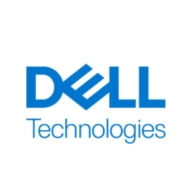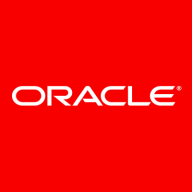

Oracle SPARC Servers and Dell PowerEdge XE-Series compete in the enterprise-level computing category. Dell PowerEdge XE-Series often holds an advantage due to its flexible configurations and better environment integration.
Features: Oracle SPARC Servers are valued for their high-volume transaction processing, enhanced data security, and built-in virtualization capabilities. They utilize unique memory and CPU optimizations. Dell PowerEdge XE-Series is known for diverse workload capabilities, supporting AI and edge computing with a modular design and power efficiency. It also ensures broader compatibility with third-party hardware and software.
Room for Improvement: Oracle SPARC Servers could improve in deployment simplicity and expand integration capabilities with more environments. They would benefit from increased compatibility with third-party solutions. Dell PowerEdge XE-Series could enhance its documentation and further streamline its deployment process. More uniform customer support across regions could also be an area of enhancement. Additionally, broader out-of-the-box security features could be added.
Ease of Deployment and Customer Service: Dell PowerEdge XE-Series offers straightforward deployment with extensive documentation and support channels, ensuring rapid setup and seamless integration across environments. Oracle SPARC Servers are highly capable but may require specialized knowledge for optimal deployment. Dell’s customer service is often noted for reliability and promptness, whereas Oracle’s targeted support may demand more specific technical insights from users.
Pricing and ROI: Oracle SPARC Servers involve higher initial costs but provide ROI for enterprises needing specialized computing solutions, benefiting from high-efficiency processor utilization. Dell PowerEdge XE-Series offers a more cost-effective setup, delivering rapid ROI through adaptable usage in varied data-intensive environments, making it appealing for performance on a budget.
| Product | Market Share (%) |
|---|---|
| Oracle SPARC Servers | 3.7% |
| Dell PowerEdge XE-Series | 1.5% |
| Other | 94.8% |


| Company Size | Count |
|---|---|
| Small Business | 4 |
| Midsize Enterprise | 4 |
| Large Enterprise | 3 |
| Company Size | Count |
|---|---|
| Small Business | 4 |
| Midsize Enterprise | 2 |
| Large Enterprise | 1 |
The PowerEdge XE-Series caters to AI-centric workloads by offering exceptional GPU support and processing power for demanding tasks like inferencing and large-scale training, making it ideal for organizations aiming to innovate with AI.
PowerEdge XE-Series stands out in modern GPU-centric computing with its purpose-built design for AI acceleration. Known for handling extreme workloads like model fine-tuning and AI-driven applications, it supports high-density GPU configurations and advanced thermal management. Its vast storage capacity and compatibility with VMware ensure reliable performance across virtualization, big data, and analytics while providing trusted security integration and robust scalability options. However, improvements in processor support, reliability, and management monitoring are sought by users.
What are the key features of PowerEdge XE-Series?In different industries, PowerEdge XE-Series is utilized for hosting SaaS, high-performance computing, and general-purpose servers. System integrators use it in client networks for applications like Hadoop, backup, and ERP. It supports virtualization and hyper-converged infrastructure solutions. Real estate sectors leverage iDRAC for efficient management, enhancing data security, power, and network redundancy.
Oracle's SPARC S7, T7, and M7 Servers with always-on memory intrusion protection and comprehensive data encryption secure data with no performance penalty. Security in silicon features and Oracle Solaris protect data in memory from unauthorized access and stop malware before it gets in.
We monitor all Rack Servers reviews to prevent fraudulent reviews and keep review quality high. We do not post reviews by company employees or direct competitors. We validate each review for authenticity via cross-reference with LinkedIn, and personal follow-up with the reviewer when necessary.